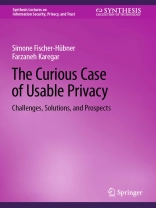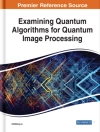This book journeys through the labyrinth of usable privacy, a place where the interplay of privacy and Human-Computer Interaction (HCI) reveals a myriad of challenges, solutions, and new possibilities. Establishing a solid understanding of usable privacy research, practices, and challenges, the book illuminates for readers the often shadowy corridors of such a multifaceted domain and offers guidelines and solutions to successfully traverse the challenging maze.
The book does not simply focus on data protection or legislative frameworks but also on what it takes for privacy to be safeguarded, understood, embraced, and easily practiced by all. It begins with a thorough exploration of the background of privacy tools and technologies, the evolution of privacy rules and regulations, and the backdrop upon which this narrative unfolds. After establishing this context, its next important focus is the current state and future directions of the field, including thefrontiers of usable privacy research in relation to the Internet of Things (Io T), usability of PETs, and usable privacy for UX and software developers. The book also considers the often-overlooked privacy narratives of marginalized communities and delves into the complexities of user-centric privacy.
Readers are provided with a blueprint for addressing these hurdles and establishing pathways for a more privacy-conscious world. The text will be of interest to students studying Computer Science, Information Systems, or Law, as well as researchers and practitioners working in the fields of usable privacy, privacy by design, Privacy-Enhancing Technologies (PETs), or HCI. All will benefit from the book’s central deliberation of a question that echoes through time and technological advancements: why does usable privacy matter?
Tabla de materias
Introduction to Usable Privacy.- Background.- Overview of Usable Privacy Research: Major Themes and Research Directions.- Challenges of Usable Privacy.- Addressing Challenges: A Way Forward.- Lessons Learned, Outlook, and Conclusions.
Sobre el autor
Simone Fischer-Hübner has been a Full Professor at Karlstad University since June 2000, where she is the head of the Privacy & Security (Pri Sec) research group. She received a Diploma Degree in Computer Science with a minor in Law (1988) and Ph.D. (1992) and Habilitation (1999) degrees in Computer Science from Hamburg University. She was a Guest Professor at Copenhagen Business School from 1994–1995 and at Stockholm University and the Royal Institute of Technology from 1998–1999. Moreover, she was awarded with an Honorary Doctorate by Chalmers University of Technology in 2021 and has since 2022 also been a guest professor at Chalmers University of Technology.
She has been conducting research in privacy, cyber security and privacy-enhancing technologies for more than 30 years. She is the Swedish representative and vice chair of IFIP (International Federation for Information Processing) TC 11 (Security and Privacy Protection), a member of the Cybersecurity Council of the Swedish Civil Contingency Agency (MSB), a board member of the Swedish Data Protection Forum (Forum för Dataskydd), and a member of the board for the Privacy Enhancing Technology Symposia (PETS). She has been partner in several national and European cybersecurity and privacy-related research projects and was the scientific coordinator of the EU H2020 Marie Skłodowska-Curie Marie Curie ITN project Privacy & Us (Privacy & Usability).
Farzaneh Karegar obtained her Ph.D. degree in December 2020 from Karlstad University, where she currently works as an assistant professor. During her Ph.D. program and postdoctoral research, she designed, implemented, and evaluated several usable tools and solutions to empower users to take control of their data and make informed decisions. She has published several papers in prestigious journals and conferences for which she received two best paper awards. Her research interests include, but are not limited to, usable privacy and consent, legal and societal aspects of information privacy, privacy-enhancing tools, and algorithmic transparency.












